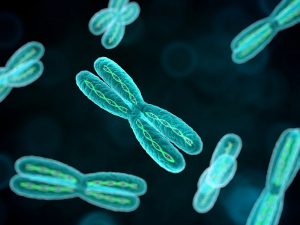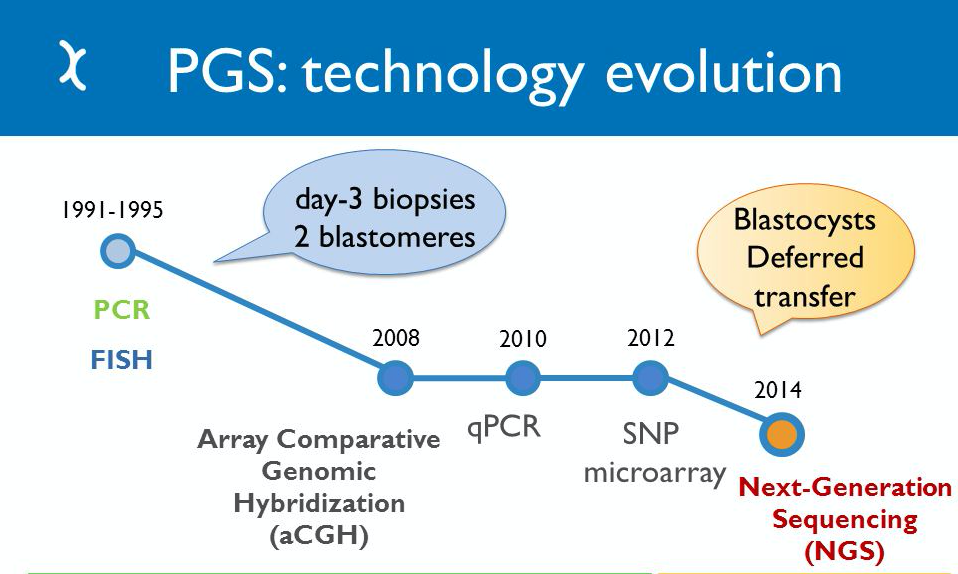Preimplantation Genetic Screening (PGS)

PGS is a method to identify missing or extra chromosomes (aneuploidy) that could cause miscarriage or a life altering disorders.
As at the same time you will know the composition of sex chromosome, you will know the baby gender as well. What we hope to do is replace a healthy and desired embryo back for you.

A baby’s mother and father each contribute a chromosome, forming a pair. Embryos with complementary, balanced pairs of chromosomes are more likely to implant, grow into viable pregnancies and develop into healthy children and adults.
One of the most common chromosomal defects, Down syndrome, occurs when chromosome 21 has three, rather than two.
Aneuploidy is usually not inherited (ie both father and mother are genetically normal). In addition, the embryos that derived from advanced reproductive age mothers have significant incident of chromosomal mutation.
Therefore, such embryos have reduced potential for achieving a viable pregnancy that lead to the implantation failure and spontaneous miscarriage, consequentially the relative low success rate observed during IVF treatment.
Chromosomal aneuploidy can cause distinct over 50% of spontaneous miscarriages with include birth defects of embryos. The risks of having a child with abnormal chromosome have been increasingly observed with maternal age. Couple who are at increased risk for having aneuploidy embryos should consider using PGS testing.
Who needs PGS?
- Women over 35 years of age
- Couples who have experienced several spontaneous miscarriages of unknown cause
- Couples with several cycles of IVF that have not achieved pregnancy
- Men with low sperm concentration
- Couples with a previous pregnancy with chromosomal abnormality
How PGS helps?
-
Improves implantation rates :
Abnormal or aneuploid embryos will fail to implant into a woman’s uterus. Therefore using PGS diagnosis for normal chromosomal embryos before transferring can increase the implantation rate.
-
Reduced spontaneous abortion :
Several studies has been discovered miscarriage is often caused by de novo abnormalities in chromosome number or aneuploidy. Since PGS could evaluate the numerical and aberration changes in chromosome and large imbalance of chromosome, consequentially the abnormal embryos will not be transferred. Therefore, PGS reduces the risk of miscarriage especially in high risk groups.
-
Increases ongoing pregnancy rate
-
Enables single embryo transfers, decreasing the number of high-risk multiple pregnancies
Why do we perform test on Day5/Day6 ?
Day5/Day6 embryos (Blastocyst stage) are well developed embryos so biopsy makes less harmful. We also can get more DNAs from Day5/Day6 biopsy and less mosaicism.
Recent data shown that Day5/Day6 biopsy achieves higher success rate than Day3 biopsy.
PGS Technology available:
Next – Generation Sequencing (NGS)
NGS, the latest technological breakthrough, is setting a new standard in preimplantation genetic screening. NGS offers reliable preimplantation genetic screening results, streamlined workflows, higher throughput capabilities, and highest in accurancy.
Array Comparative Genomic Hybridization (aCGH)
As new technologies ware developed and applied to preimplantation genetic screening, implantation rates improved. The array-based 24sure technology facilitated investigation of all 24 chromosomes in the early embryo, significantly improving preimplantation genetic screening success.

